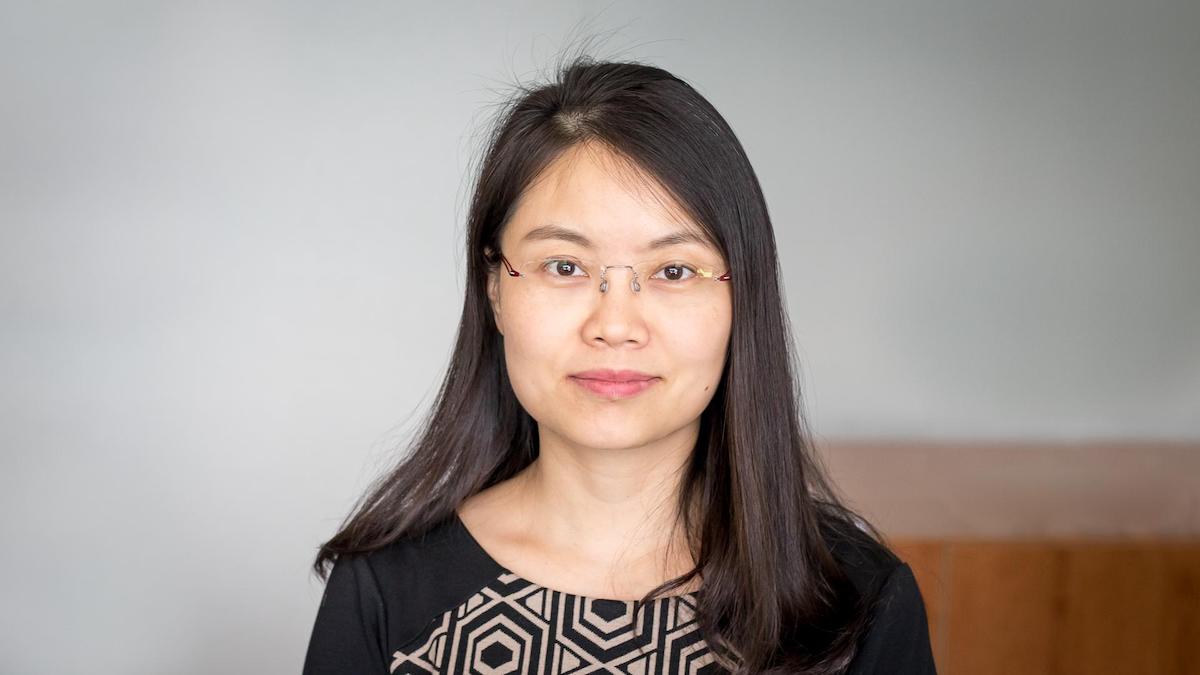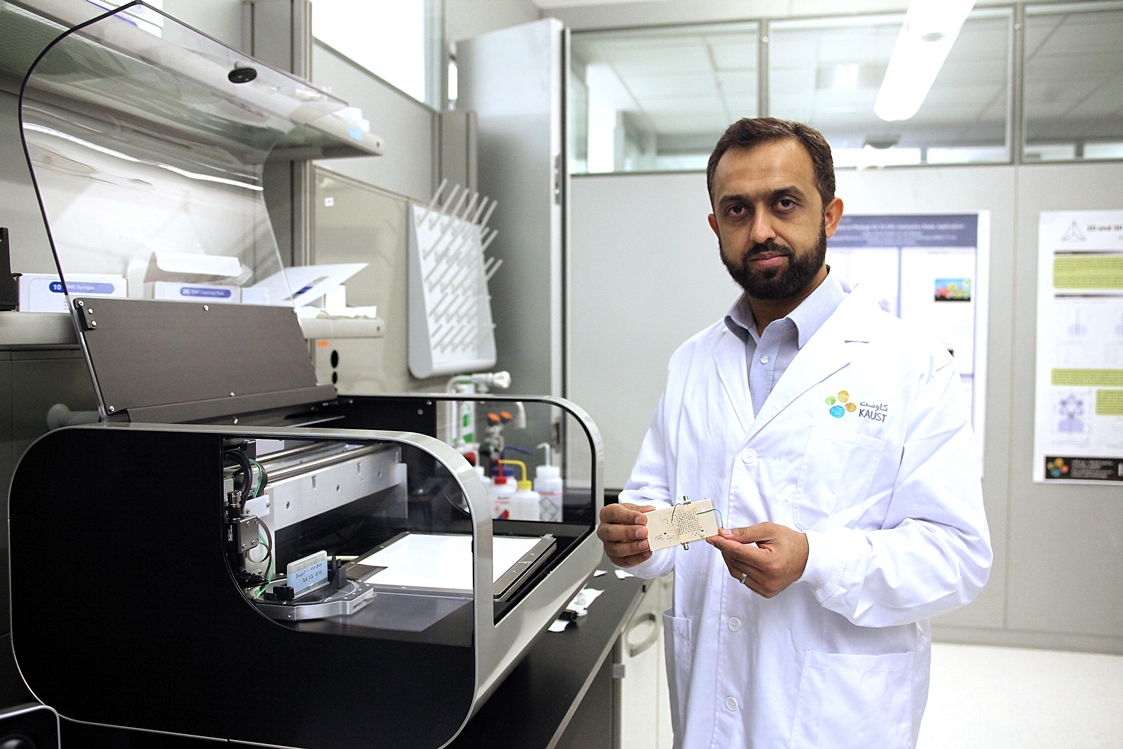Breaking the limits of learning

KAUST Associate Professor of Computer Science Xiangliang Zhang and researchers in her Machine Intelligence and Knowledge Engineering group develop and apply effective algorithms in machine learning and data mining for artificial intelligence. File photo.
-By David Murphy, KAUST News
Xiangliang Zhang, KAUST associate professor of computer science, enjoys deep-diving into her research domain to break the limits of learning for large-scale and complex data. As a member of the University's Computer, Electrical and Mathematical Science and Engineering division, Zhang's research focus is to develop and apply effective algorithms in machine learning and data mining for diverse artificial intelligence (AI) applications. As the principal investigator of the KAUST Machine Intelligence and kNowledge Engineering (MINE) group, she believes that learning from data is one of the keys to making AI systems successful.
Zhang and her team currently research complex graph data, enabling the MINE group to profile nodes, predict links, detect computing communities and understand the reasons of their linkages. The MINE group's overarching research goal is to understand the key challenges in applying machine learning to other fields and how to address these challenges moving forward. She and her colleagues investigate whether problems in other domains can be potentially addressed by machine learning.

KAUST Associate Professor Xiangliang Zhang stated she believes that 'data is the core of almost all artificial intelligence systems.' Image courtesy of Shutterstock.
"We also study other graph problems. For example, given two independent graphs, we learn from each of their structures and then align nodes in one graph to those in the other graph, because the aligned node pairs may refer to the same person with two different accounts in two graphs. Also, we apply the information learned from graphs to build recommender systems for the recommendation of the next movie to watch; the interesting research papers to read; the useful datasets to explore; and interesting places to visit, etc."
Career path
Before joining KAUST, Zhang obtained her M.S. and B.S. degrees in computer science from Xi'an Jiaotong University, China, in 2006 and 2003, respectively. In 2010, she earned her Ph.D. degree in computer science from INRIA and the University of Paris-Sud, France, and was a European ERCIM research fellow at the Norwegian University of Science and Technology. It was in the midst of her studies that Zhang began to see herself realizing her goal of becoming a faculty member.

Before joining KAUST, Associate Professor Xiangliang Zhang was a research fellow at the Norwegian University of Science and Technology in Trondheim (main university building pictured here). Image courtesy of Shutterstock.
"After starting a faculty position and working with my students, I feel happy about my decision of staying in academia," Zhang continued. "When I was a student, I could only work in one narrow direction. With my group members, I can work on a broader domain and also explore the diverse application of machine learning. We can make a systematic plan of our research projects by [having] one student contribute to one part of the whole system. Thus, we deliver research achievements with a higher impact."
Benefiting from a collaborative research environment
Zhang is keen to collaborate with as many of her peers at KAUST as possible. The opportunity to come together with University experts from diverse scientific fields to extend the application of AI to other domains is not lost on the young researcher.
"At present, I am collaborating with Professor Carlos Duarte on applying machine learning on marine animal behavior modeling and plastic litter identification on Red Sea beaches; with Professor Vladimir Bajic on bioinformatic problems as a member of the KAUST Computational Bioscience Research Center; with Professor Tariq Alkhalifah on learning from seismic data for geophysical research problems; with Professor Jeff Shamma on smart grids; with Professor Tareq Al-Naffouri on precise localization; with Professor Xiaohang Li on the design of semiconductor devices; and with Professor Atif Shamim and Professor Hakan Bagci on smart metasurface antennas," she explained.
"I really appreciate the innovative environment of KAUST, without which I cannot make such fast progress on my research. The colleagues with whom I am collaborating are leading experts in their fields. They are the right [people] to talk when I want to explore the application of machine learning to specific domains—for example, biology, the internet of things, marine science, semiconductor materials and so on."

KAUST Professors Atif Shamim (pictured) and Hakan Bagci collaborate with Associate Professor Xiangliang Zhang on research work in smart metasurface antennas. File photo.
Learning to ask the 'right' questions
For her students—and KAUST graduate students in general—Zhang has the following advice: "Learning to ask the 'right' questions is far more important than learning to answer them," she said.
"We must always refresh [our minds] with the most recent developments in AI," Zhang noted. "Outside of attending conferences, reading recent papers, as well as checking the keynotes and tutorials given in these conferences—along with talking with scholars—students must spend some time thinking after reading. To quote Confucius: 'Reading without thinking gives one a disorderly mind.'"
"Students sometimes come to me and say they get overwhelmed by massive, newly published papers. They felt left behind by new ideas. It is essential to think about how new trends can be linked with the previous papers and what can be added to the research findings in the future," she added.
"At this stage of my career, I now understand why I like to do research. Children like toys—especially new toys—because [children] explore the world by playing with toys. It's the same feeling for me with my research," Zhang said. "I do research, ask questions and find answers to explore the world. This process is like how children play with toys; it is always an exciting process. For me, this is the beauty of research."

